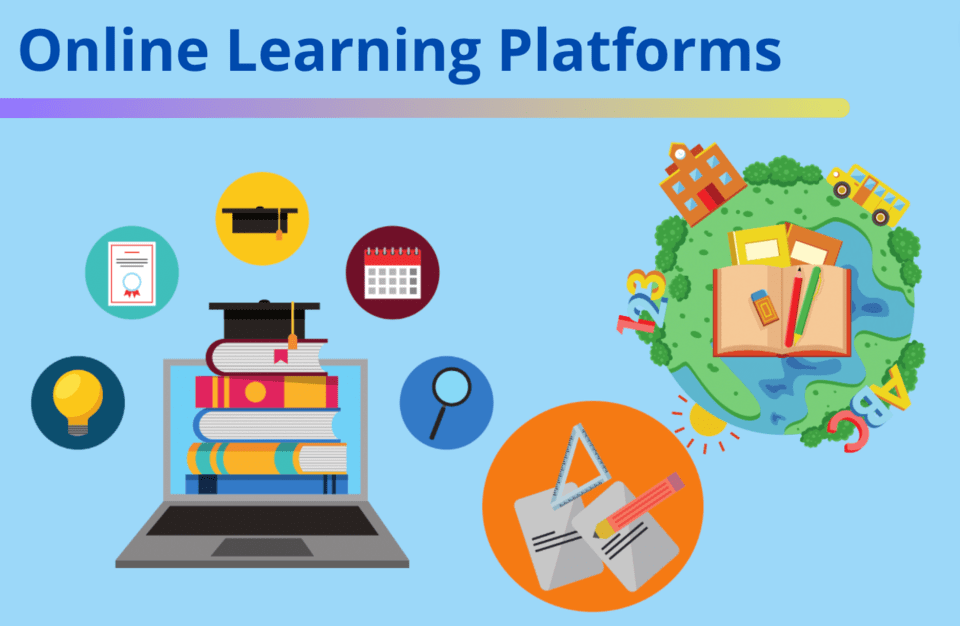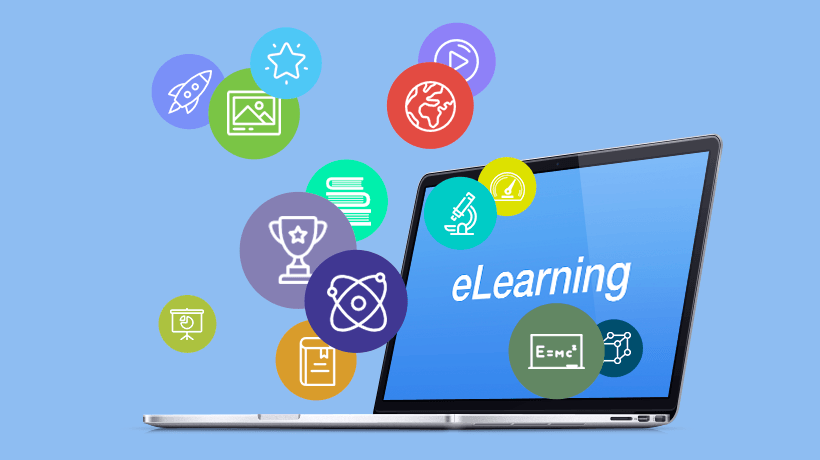The digital age has introduced numerous innovations across industries, and education has undoubtedly experienced one of the most profound transformations. Traditional classroom-based learning, once the standard mode of education, has seen a shift toward online learning classes, offering flexibility and convenience for students across the globe. However, as online education grows in popularity, one challenge that persists is maintaining student engagement and participation in virtual environments.
Student engagement is crucial to learning success. Engaged students are more likely to retain information, complete assignments, participate in discussions, and show greater enthusiasm toward their studies. Yet, online learning often lacks the immediate feedback and dynamic interactions that physical classrooms naturally provide. This has raised concerns about the potential decline in student engagement and participation in online classes. So, how can online learning classes address this challenge and actively improve student involvement?
In this article, we will explore the strategies, tools, and methodologies that online learning platforms and educators can employ to improve student engagement and participation, ensuring that learners remain motivated, interactive, and deeply involved in their educational journeys.
Key Takeaways
- Interactive Tools and Multimedia: Engaging students with multimedia content and interactive tools boosts participation and accommodates various learning styles.
- Live Sessions and Real-Time Feedback: Live discussions and real-time feedback create a dynamic learning environment, fostering engagement and improving understanding.
- Personalization Drives Motivation: Customizing learning paths and offering self-paced options empower students to take ownership of their learning, increasing motivation and participation.
- Collaboration Enhances Engagement: Peer-to-peer collaboration through discussion boards, group projects, and shared tools strengthens community and encourages active participation.
- Regular Feedback and Clear Expectations: Consistent feedback and transparent guidelines keep students on track and motivated, ensuring they actively participate throughout the course.
Understanding Student Engagement and Participation in Online Learning

Before diving into strategies, it’s essential to define what student engagement and participation mean in the context of online learning:
- Student Engagement: In the online learning environment, student engagement refers to the level of interest, effort, and emotional investment a student has in their courses. An engaged student not only attends classes but actively participates in discussions, interacts with peers and instructors, and takes ownership of their learning process.
- Student Participation: Participation refers to how actively students interact with the course material, other students, and instructors. It encompasses activities such as answering questions, submitting assignments, attending live sessions, participating in discussions, and engaging with supplementary materials.
High levels of engagement and participation are associated with better academic outcomes, improved retention rates, and greater satisfaction with the learning experience.
Why Is Engagement and Participation Important in Online Learning?
In an online learning environment, students are often more independent and may not receive the same level of immediate feedback as they would in traditional classrooms. This makes engagement and participation all the more critical. Here are a few reasons why:
- Improved Retention: Studies have shown that when students are engaged, they retain information better. Engagement encourages active learning, which deepens comprehension and memory retention. Passive learning, on the other hand, leads to forgetting.
- Enhanced Motivation: Participating in class discussions, interactive activities, and collaborative projects boosts students’ intrinsic motivation. Active participation fosters a sense of accomplishment and provides feedback that keeps students motivated throughout their learning journey.
- Increased Accountability: Online learners may feel disconnected from their peers, making it easy to procrastinate. When engagement and participation are emphasized, students feel more accountable for their own learning and their contributions to the virtual classroom community.
- Developing Collaborative Skills: Participation in discussions, group projects, and peer-to-peer interactions helps students build essential soft skills, such as teamwork, communication, and problem-solving, which are highly valued in both academic and professional settings.
How Can Online Learning Classes Improve Engagement and Participation?
While the challenge of engaging students remotely is real, many strategies, tools, and techniques can be used to enhance participation in online learning. Below are several approaches to keep learners engaged and motivated in a virtual classroom.
1. Interactive Learning Tools and Multimedia Content
Incorporating multimedia content, such as videos, animations, infographics, and audio files, into online courses is one of the most effective ways to engage students. These dynamic resources help break up the monotony of text-heavy material and cater to various learning styles (visual, auditory, and kinesthetic).
- Video Lectures and Interactive Videos: Video-based content is highly engaging. With tools like interactive videos, students can click on embedded questions, pause the video for reflection, and even jump to different parts of the content depending on their needs. These features create an engaging and personalized learning experience.
- Gamification: Adding elements of game design, such as point systems, challenges, badges, and leaderboards, turns learning into a fun and competitive activity. This fosters intrinsic motivation and encourages students to participate actively.
- Interactive Quizzes and Polls: Quizzes and polls not only test knowledge but encourage active participation. They provide immediate feedback to students, helping them to understand concepts better while maintaining engagement through interactivity.
2. Live Sessions and Real-Time Interaction
One of the drawbacks of online learning is the lack of face-to-face interaction. To bridge this gap, educators can organize live sessions such as webinars, Q&A sessions, and office hours. These real-time interactions provide a space for students to ask questions, discuss concepts, and connect with instructors and peers.
- Virtual Classrooms and Video Conferencing: Tools like Zoom, Microsoft Teams, and Google Meet enable real-time communication. These platforms allow instructors to conduct live lessons, discussions, and even group activities, all while maintaining a sense of community in the classroom.
- Breakout Rooms for Collaboration: In larger online classes, breakout rooms can be used for small group discussions or collaborative tasks. This allows students to engage with each other in a more intimate setting and can improve participation, especially for shy or introverted students.
3. Discussion Boards and Peer-to-Peer Interactions
Creating a virtual space for students to interact with each other helps foster a sense of community in an otherwise isolated learning environment. Discussion boards, forums, and collaborative group projects encourage peer-to-peer interaction, allowing students to share ideas, ask questions, and provide support.
- Asynchronous Discussions: In addition to synchronous communication, discussion boards where students can post their thoughts and respond to others asynchronously encourage participation at different times of the day. This also allows for thoughtful reflection before responding.
- Peer Reviews: Incorporating peer reviews into assignments not only promotes active participation but also helps students learn from each other. Giving constructive feedback to peers deepens their understanding of the subject matter.
4. Personalized Learning Paths
Personalization is a powerful tool for improving engagement and participation. Offering students the opportunity to choose topics of interest, set learning goals, or customize their study schedules can make them feel more invested in the course.
- Self-Paced Learning: Allowing students to work through materials at their own pace empowers them to take control of their learning. It also caters to individual learning styles and preferences, helping each student feel more engaged with the content.
- Adaptive Learning Systems: Many online platforms use AI to adapt the course material to the student’s skill level and learning pace. Adaptive learning provides tailored content that challenges students at the right level, encouraging active participation.
5. Clear Expectations and Regular Feedback

Clear communication regarding course expectations and continuous feedback helps students stay on track and actively engage in their learning. In an online learning environment, where students might feel detached or isolated, regular feedback from instructors is crucial.
- Timely Feedback: Providing quick feedback on assignments, quizzes, and participation ensures that students stay motivated and engaged. Feedback highlights areas of improvement and gives students direction on how to continue progressing.
- Clear Guidelines and Expectations: Clearly outlining course objectives, expectations for participation, and assessment criteria helps students stay focused. When students understand what is expected of them, they are more likely to engage and participate in class activities.
6. Collaborative Learning and Group Work
Group projects and collaborative learning opportunities can enhance student engagement and build essential skills. Despite the virtual setting, online platforms can provide a range of tools that facilitate teamwork.
- Shared Documents and Collaborative Tools: Platforms like Google Docs, Padlet, and Miro allow students to collaborate on documents, presentations, and projects in real-time. These tools ensure that all group members can contribute their ideas and participate in the creation of shared content.
- Peer-Led Activities: Students can take turns leading discussions or group activities. This encourages active participation and provides leadership opportunities, increasing engagement within the class.
7. Incorporating Active Learning Strategies
Active learning involves students engaging directly with the content, as opposed to passively receiving information. Online learning classes can adopt active learning techniques to enhance participation and critical thinking.
- Case Studies and Problem-Solving Activities: Incorporating real-world problems or case studies into lessons encourages students to analyze and apply what they’ve learned in practical situations, enhancing their participation and engagement.
- Interactive Problem-Solving: Using platforms that offer interactive problem-solving tools, such as simulations or coding environments, helps students practice applying concepts in real-time.
Embracing Modern Pedagogical Techniques
To truly enhance engagement and participation in online learning environments, educators must also explore modern pedagogical approaches that actively involve students in the learning process. These techniques shift away from traditional passive learning models and encourage active, student-centered approaches that can be seamlessly integrated into online platforms.
Flipped Classroom Model
The flipped classroom model is a highly effective way to engage students in online learning. In this model, students learn new content outside of class (through videos, readings, etc.) and then use class time to engage in higher-order activities such as problem-solving, discussions, and applying knowledge. This model works particularly well in an online setting, where lectures and content delivery can be done asynchronously, and class time (which could be synchronous) is used for interactive and participatory activities.
- Student-Centered Learning: The flipped classroom puts students at the center of their learning experience, encouraging them to actively engage with the content before the class and then applying that knowledge during real-time sessions. This increases participation as students are better prepared and feel more confident in their understanding.
- Increased Peer Interaction: During synchronous classes, students collaborate with their peers to solve problems or work on projects. This promotes communication, critical thinking, and peer-to-peer learning, further enhancing participation.
Project-Based Learning (PBL)
Project-Based Learning (PBL) is another pedagogical approach that encourages engagement. PBL involves students working on a long-term project that requires them to apply what they’ve learned to solve real-world problems. This approach is inherently participatory, as students are often tasked with researching, discussing, and presenting solutions.
- Hands-On Experience: In online learning, PBL can be facilitated through group work, research assignments, and digital presentations. Students are more likely to engage with the content when they see its relevance and real-world application.
- Collaboration and Accountability: By collaborating on projects, students hold each other accountable and contribute to a collective outcome, making them feel more responsible for their success. This increases motivation and participation throughout the process.
- Cross-Disciplinary Learning: Projects often require students to engage with multiple subject areas, fostering interdisciplinary learning and making the experience more engaging. For example, a project on sustainability might involve environmental science, economics, and social policy, allowing students to explore multiple angles of a topic.
Socratic Method and Inquiry-Based Learning
The Socratic Method emphasizes the use of questioning and dialogue to encourage critical thinking and reflection. By using open-ended questions and challenging students to articulate their thoughts, educators can stimulate participation in both synchronous and asynchronous formats.
- Student-Led Discussions: The Socratic method promotes student-led discussions, where learners are responsible for driving the conversation. This can take place in live video discussions or through structured debate forums on discussion boards. This encourages deeper thinking and more active participation, as students take ownership of the dialogue.
- Inquiry-Based Learning: Inquiry-based learning involves students posing questions, investigating them, and developing answers based on evidence. This method encourages participation by empowering students to direct their learning based on curiosity and exploration. In online classes, tools such as collaborative wikis, shared research spaces, and online journals can facilitate inquiry-based learning effectively.
Encouraging Social and Emotional Learning
Engagement in online learning isn’t just about academic participation—it also includes the social and emotional well-being of students. The social aspect of learning plays a significant role in online environments, where students may feel isolated or disconnected. Building a sense of community, fostering social relationships, and emphasizing emotional support can increase engagement and participation.
Creating a Supportive Virtual Community

A strong virtual community allows students to feel connected to their peers and instructors, increasing their emotional investment in the course. Online platforms can offer opportunities for students to interact informally, such as through virtual “coffee hours,” student-led discussions, or casual chat groups.
- Encouraging Peer Interaction: Students are more likely to engage when they feel supported by a peer network. By creating spaces for casual interaction, online educators can help students bond over shared interests, reducing feelings of isolation and increasing participation.
- Fostering Inclusivity and Diversity: Online learning environments that celebrate inclusivity and diversity encourage more students to participate. Activities and discussions that highlight diverse perspectives can create a sense of belonging for all learners, leading to increased engagement.
Promoting Emotional Intelligence
Emotional intelligence (EQ) involves the ability to identify and manage one’s emotions, as well as understand the emotions of others. Integrating social-emotional learning (SEL) activities into online classes helps students build these skills, fostering empathy, self-awareness, and effective communication.
- Encouraging Self-Reflection: Online courses can include reflective assignments where students assess their emotional responses to the learning material or collaborative projects. This can improve engagement by making students more self-aware and invested in the learning process.
- Building Positive Relationships: Educators who demonstrate empathy and open communication foster an environment of trust, which encourages students to engage more readily. Regular check-ins, virtual office hours, and personalized support can help build these positive relationships.
The Role of Technology in Enhancing Engagement
While pedagogical strategies are essential for improving participation, technology plays a critical role in enhancing the experience. Online learning platforms often come equipped with features designed specifically to improve interaction, engagement, and participation.
Interactive Platforms and Features
The platform itself can either facilitate or hinder student engagement. Platforms that integrate interactive features, such as real-time polls, quizzes, gamified elements, and multimedia content, encourage students to interact with the content and each other.
- Collaborative Learning Tools: Platforms like Slack, Trello, and Google Classroom allow students to collaborate and communicate with one another. Shared documents, project boards, and instant messaging can enhance teamwork and encourage participation outside of class hours.
- Real-Time Feedback Systems: Tools like Kahoot, Quizlet, and Mentimeter provide instant feedback on quizzes and assessments, which not only keeps students engaged but also helps them track their learning progress.
- Mobile Accessibility: Many students now access learning materials via smartphones and tablets. Online platforms that are mobile-friendly ensure that students can engage with the course content from anywhere, at any time, thus increasing participation levels.
Artificial Intelligence and Learning Analytics

AI and learning analytics are powerful tools for improving online student engagement. Learning management systems (LMS) equipped with AI can analyze student behavior and adapt course content accordingly, delivering a personalized experience that keeps students engaged.
- Adaptive Learning Systems: AI-powered adaptive learning systems provide personalized learning pathways based on students’ progress and performance. This keeps students engaged by offering challenges that match their abilities while providing extra support in areas where they may struggle.
- Learning Analytics: Learning analytics allow instructors to monitor engagement levels and participation, identifying students who may need additional support. Early intervention based on analytics can help prevent disengagement and foster consistent participation throughout the course.
Also Read: How Do Online Learning Platforms Cater To Diverse Learning Styles?
Conclusion
Engaging and motivating students in online learning classes presents unique challenges, but these challenges are not insurmountable. By utilizing interactive learning tools, live sessions, personalized learning paths, and collaborative opportunities, educators can create an online classroom that fosters high levels of participation and engagement. The key lies in offering students a variety of ways to interact with the content, the instructor, and their peers, while ensuring that feedback and accountability are part of the learning process.
Ultimately, a well-engaged student is one who is motivated, involved, and invested in their learning journey. As online learning continues to evolve, the integration of these strategies will ensure that students receive a rich, interactive, and impactful educational experience, regardless of the medium.
FAQs
How can I keep students engaged in online classes?
Use interactive multimedia content, real-time discussions, gamification, and regular quizzes to keep students engaged.
What tools are available to improve student participation in online classes?
Tools like video conferencing, breakout rooms, discussion boards, and collaborative platforms like Google Docs and Miro can improve participation.
How do live sessions improve student engagement?
Live sessions offer real-time interaction with instructors and peers, providing immediate feedback, answering questions, and fostering a sense of community.
Why is personalized learning important for engagement?
Personalized learning allows students to study at their own pace and according to their individual needs, making them feel more invested and motivated.
How can feedback enhance online learning participation?
Timely and constructive feedback keeps students motivated, improves their understanding, and guides them on the right path to success.
Can gamification be effective in online learning?
Yes, gamification increases student motivation and participation by introducing fun, competitive elements, such as rewards, points, and badges.
What role do collaborative activities play in student engagement?
Collaborative activities encourage peer interaction, critical thinking, and teamwork, which enhances student engagement and creates a more dynamic learning environment.




